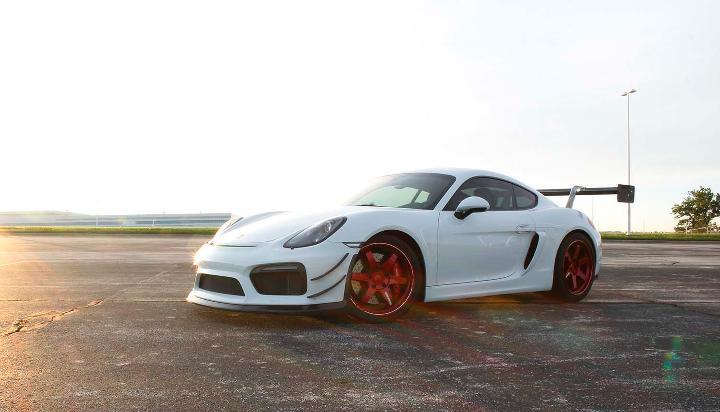Sports cars are often seen as works of art with their sleek, eye-catching style, but there is more going on than aesthetic appeal. Sure, auto manufacturers want you to like the way a car looks, but they’re also trying to optimize the vehicle’s aerodynamics. Some actually do a pretty good job, but in nearly every case, there’s room for improvement.
If you’re looking to improve car aerodynamics on your factory model, there are a range of aftermarket performance parts that will help.
Top Aerodynamic Performance Parts
By improving the car’s aerodynamic properties, you have the opportunity to increase downforce, reduce drag, and ultimately post faster track times. Getting the right balance is critical, which is why it often makes sense to go with a complete aerodynamic package.
Here are some performance parts you may want to include in your setup:
Rear Diffuser
The rear diffuser on this Subaru WRX VA will improve car aerodynamics with increased downforce and reduced drag.
A rear diffuser adds stability through improved downforce by helping create a lower-pressure zone under the car. This performance part uses strakes or fins to guide airflow and has expansion chambers to transition lower-pressure air back into the higher pressure ambient air. By smoothing this transition, it fills the void behind your car and reduces turbulence and drag.
Rear Wing
 The UCW rear wing on this Subaru BRZ can deliver a large boost in downforce.
The UCW rear wing on this Subaru BRZ can deliver a large boost in downforce.
Perfect for achieving a large bump in downforce, a rear wing is a popular aerodynamic enhancement. When properly designed and installed, the velocity on the underside of the wing will be higher than the top. This creates a lower pressure zone that pulls the car downward. The higher pressure on top of the wing will also aid in generating additional downforce.
Front Splitter
The front-end downforce on this Porsche 981 is enhanced through a front splitter and dive planes.
As the name suggests, this component splits the air you encounter. It sends the slower, higher-pressure air over the top and the faster, lower-pressure air underneath. An efficient way to improve car aerodynamics, the front splitter increases downforce (reduces lift), improves gas mileage, and lowers track times. The full splitter assembly typically includes an air dam, splitter, and support rods.
Dive Planes / Canards
An aggressive approach at the rear of your car may call for a little extra downforce at the front to balance things out. You can accomplish this with dive planes, also known as canards. They offer a slight downforce increase by helping evacuate air from the fenders and improving airflow around the car. A bit of downforce is generated on the part itself with high pressure air on top and a lower pressure zone on the bottom. They are installed at the front sides of your car, just in front of the wheels.
Transmission Covers
In many cases, the factory underbody isn’t ideal for aerodynamics. Large openings may result in turbulent air, which hinders performance. Transmission covers help feed airflow from the engine bay toward the diffuser in the back. The flat surface is ideal to ensure a laminar, non-turbulent airflow.
Improve Car Aerodynamics With Verus Engineering
Now that you have a better idea of how to improve aerodynamics on a car, it’s time to get started. Order aftermarket performance parts today from Verus Engineering. Experts in computational fluid dynamics and computer-aided design, we craft components for optimal performance. Buy individually or get a full aerodynamic kit to ensure a safe and balanced installation.
How To Improve Aerodynamics On A Car